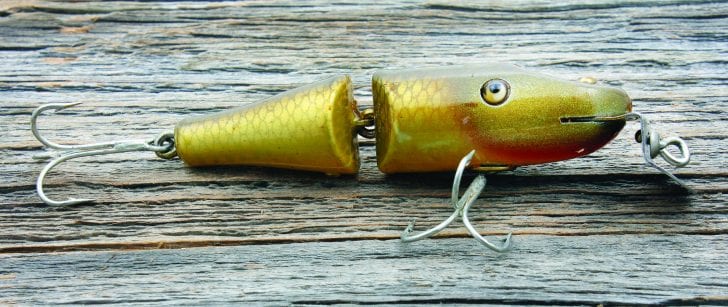Photo by Ilkka Jukarainen/flckr
By Billy Darby
In the year 1947, the very first “green trout” (bass) I ever remember seeing was caught by my grandfather as he walked along the edge of a pond with a jigger pole.
This was an old-time method for catching green trout. It consisted of a long reed pole with a big treble hook adorned with flannel strips, pork skin and knitting yarn tied to the end of the pole. While walking the bank, this lure was dabbled along the pond’s edge. When the bass hit, there was no bending of the pole or setting the hook, just straight up the bank with fish in tow until there was no chance of the fish flopping back into the water. It was essentially the same technique early naturalist William Bartram described being used by Native Americans in accounts from 1791.
As with all generations, each assumes that the way it is now is the same way it has always been. Fishing styles, lures, boats, motors and technology are the same and will be so until some serious reasoning is considered.
My next big learning experience was casting with a steel rod and level-wind reel spooled with braided line. The lure was the forerunner of today’s plastic worm. These lures were made of red or black strips of inner tube rubber about 8 inches long and about ½-inch wide, folded in the front to form a head in front of a weedless hook with a split-lead sinker as a weight.
In the mid 1950s, someone invented the Golly Whopper plastic worm with two imbedded weedless hooks, soon followed by an earthworm-look assembled with a weedless hook harness with a front spinner.
Wooden topwater lures have been around since forever, with different forms and paint schemes. During the early 1960s came the advent of hollow plastic topwater lures that replaced almost all of the wooden ones. Then came rattles and plastic-lipped divers. Then, in the early 1970s, someone came up with the term “crankbait,” and a big plastic lip allowed for deeper presentation. The bass-fishing revolution would never look back.
But some of us can still remember the early post WWII days with a fond memory.
Today’s lure-making technology is expanding at a rapid pace, and we can expect lures to be the exact replica of prey and duplicate the sound emissions perfectly. Sonar electronics with computer-aided technology will show actuality as if we were looking into a camera. Similar enhancement will identify the targeted species, and if the human mind can conceive an idea, expect the future to produce what once was a dream.
Billy Darby is a professional guide on Lake Eufaula. He can be reached at imfishing4u@windstream.net or 229-768-2369.
